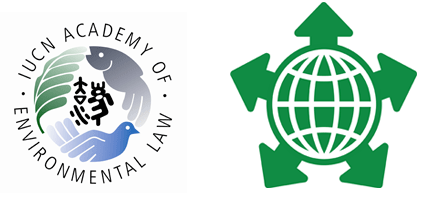Location
Ceremonial Mootcourt Room
Start Date
2-7-2012 1:30 PM
End Date
2-7-2012 2:50 PM
Description
One of the most significant events in recent comparative constitutional law on environmental issues has been the recognition of rights to nature in the Ecuadorian Constitution of 2008. A claim has been made of being a change of paradigm in the constitutional tradition, which goes beyond Western legal culture to add ideas and values of the indigenous peoples of Ecuador, particularly those of the Andes. That implies, for the fathers of the Constitution, the opening of a new path for social organization, more respectful with nature, escaping from consumerism and predation on natural resources, and concentrated on (environmental and social) justice issues, in the way to the ‘good living’ (buen vivir, in Spanish; sumak kawsay, in Quechua).
Given the high expectations posed by the drafters of the Constitution and time passed since its coming into force, an assessment seems to be appropriate, not only within the Ecuadorian legal community, but for environmental lawyers around the world. The aim of the presentation is to give that assessment, centered on the rights of nature, but taking into account the new paradigm of social metabolism presented by the Constitution.
To do that, in my opinion, it is necessary to explain:
(i) summarily, the sumak kawsay constitutional paradigm,
(ii) and, then, how and why the rights of nature are incorporated to the Constitution.
Then, a critical analysis is required, in order to discuss:
(i) the internal coherence of the Ecuadorian constitutional paradigm, particularly as a model for a change at a global level,
(ii) the adequacy, consistency and effectiveness of the rights of nature, confronted with the goals which justify their inclusion in the Constitution,
(iii) and, finally, if there are other (more consistent and effective) ways to achieve those goals.
Presentation
Included in
Rights of Nature in Ecuador: Change of Paradigm or Constitutional Rhetoric
Ceremonial Mootcourt Room
One of the most significant events in recent comparative constitutional law on environmental issues has been the recognition of rights to nature in the Ecuadorian Constitution of 2008. A claim has been made of being a change of paradigm in the constitutional tradition, which goes beyond Western legal culture to add ideas and values of the indigenous peoples of Ecuador, particularly those of the Andes. That implies, for the fathers of the Constitution, the opening of a new path for social organization, more respectful with nature, escaping from consumerism and predation on natural resources, and concentrated on (environmental and social) justice issues, in the way to the ‘good living’ (buen vivir, in Spanish; sumak kawsay, in Quechua).
Given the high expectations posed by the drafters of the Constitution and time passed since its coming into force, an assessment seems to be appropriate, not only within the Ecuadorian legal community, but for environmental lawyers around the world. The aim of the presentation is to give that assessment, centered on the rights of nature, but taking into account the new paradigm of social metabolism presented by the Constitution.
To do that, in my opinion, it is necessary to explain:
(i) summarily, the sumak kawsay constitutional paradigm,
(ii) and, then, how and why the rights of nature are incorporated to the Constitution.
Then, a critical analysis is required, in order to discuss:
(i) the internal coherence of the Ecuadorian constitutional paradigm, particularly as a model for a change at a global level,
(ii) the adequacy, consistency and effectiveness of the rights of nature, confronted with the goals which justify their inclusion in the Constitution,
(iii) and, finally, if there are other (more consistent and effective) ways to achieve those goals.

